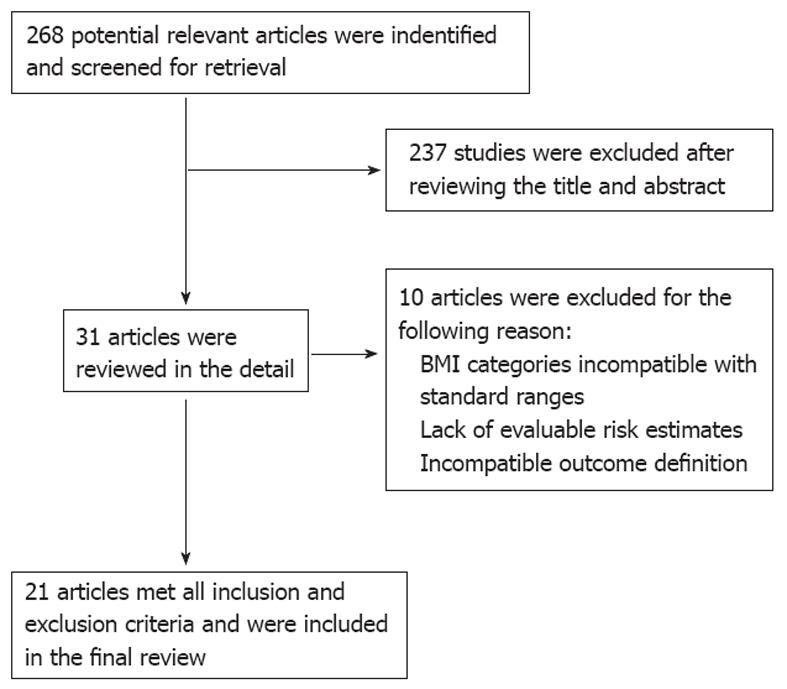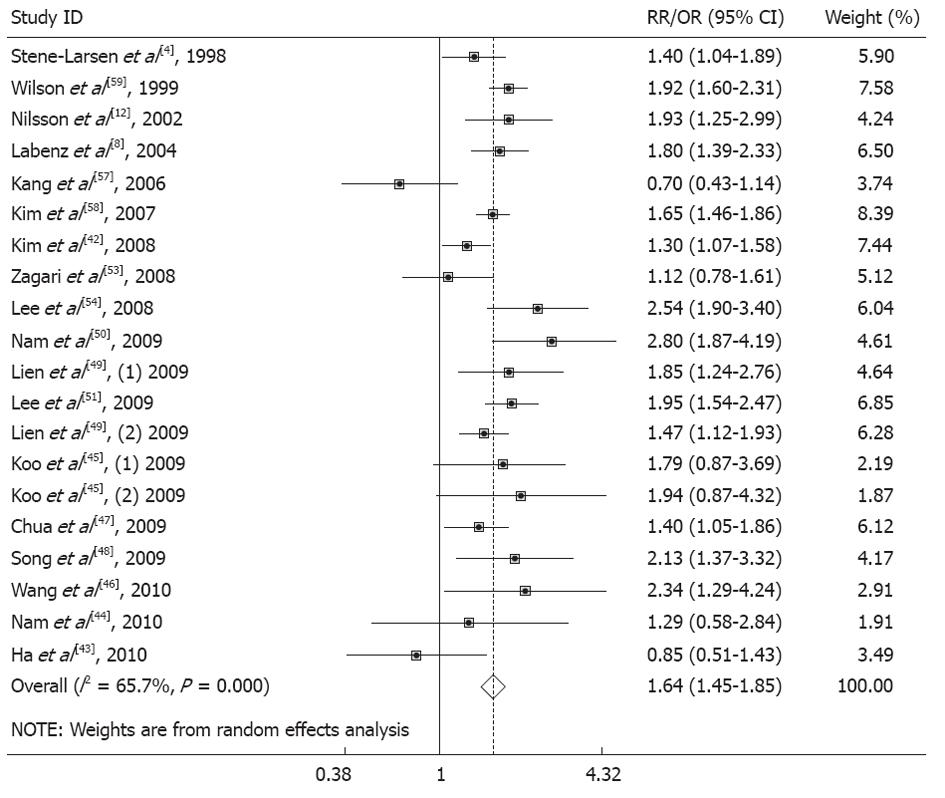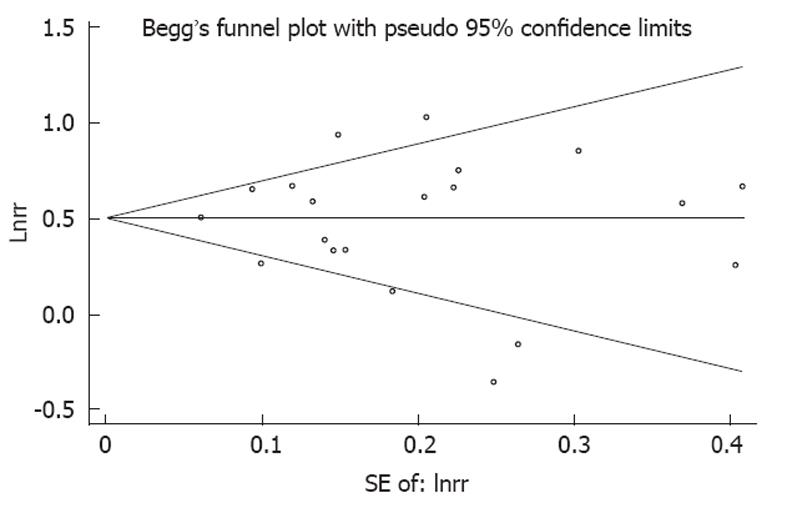Copyright
©2012 Baishideng Publishing Group Co.
World J Gastroenterol. May 28, 2012; 18(20): 2545-2553
Published online May 28, 2012. doi: 10.3748/wjg.v18.i20.2545
Published online May 28, 2012. doi: 10.3748/wjg.v18.i20.2545
Figure 1 Flow diagram.
BMI: Body mass index.
Figure 2 Erosive esophagitis and body mass index (overweight and obese) in males and females.
The size of the square represents the weight that the corresponding study exerts in the meta-analysis. RR: Relative risk; OR: Odds ratio.
Figure 3 Erosive esophagitis and body mass index (overweight and obese) in males.
The size of the square represents the weight that the corresponding study exerts in the meta-analysis. RR: Relative risk; OR: Odds ratio.
Figure 4 Evaluation of publication bias using a funnel plot.
No significant funnel asymmetry was observed which could indicate publication bias. The horizontal line in the funnel plot indicates the random effects summary estimate, while the sloping lines indicate the expected 95% CI for a given standard error, assuming no heterogeneity between studies. Each trial is represented by a circle, the area of which represents the trial’s precision. Larger circles represent trials that offer more information.
- Citation: Cai N, Ji GZ, Fan ZN, Wu YF, Zhang FM, Zhao ZF, Xu W, Liu Z. Association between body mass index and erosive esophagitis: A meta-analysis. World J Gastroenterol 2012; 18(20): 2545-2553
- URL: https://www.wjgnet.com/1007-9327/full/v18/i20/2545.htm
- DOI: https://dx.doi.org/10.3748/wjg.v18.i20.2545












